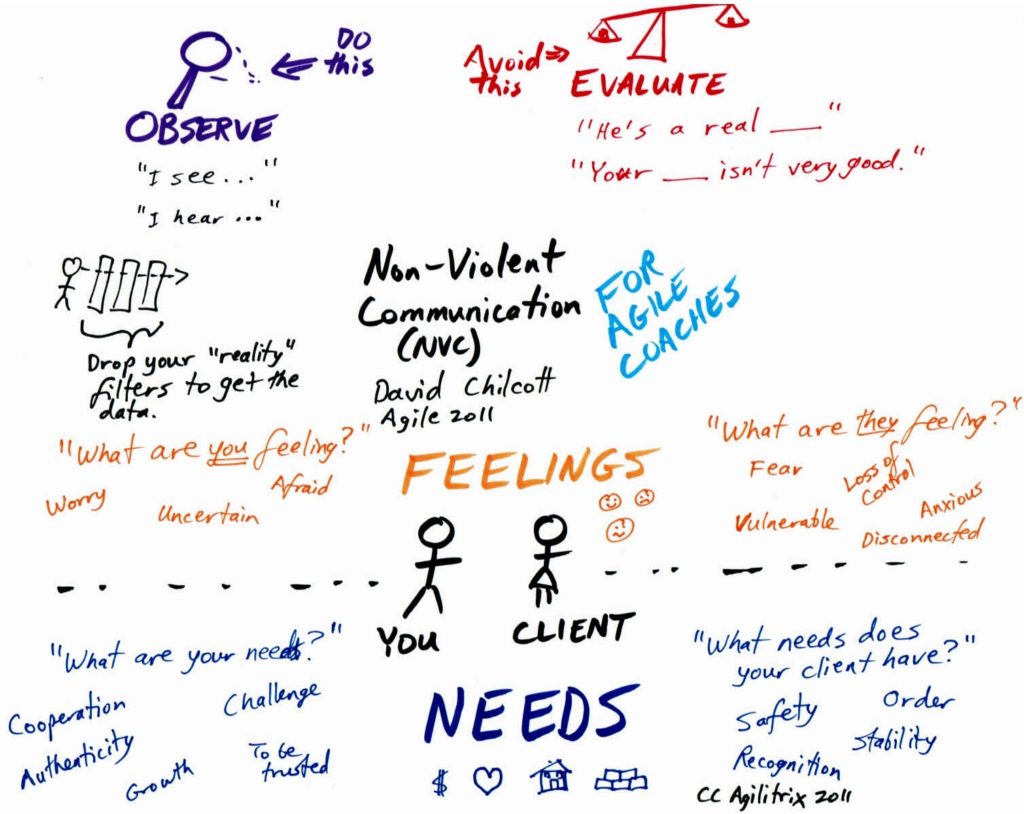At Agile 2011, I was very fortunate to attend David Chilcott’s session on NonViolent Commuication (NVC) for Agile Coaches. NVC is a very powerful communication toolkit that has already helped me. I wonder how I ever managed without it.
At it’s very simplest form it is about explicitly considering your (and other’s) feelings and needs. The following diagram outlines the key elements of NVC for coaches.

Observing
Observing is an important skill for an Agile Coach. In NVC, the goal is to observe without evaluation, judgement or analysis. The idea here is that when we focus on observable data (I see, hear, etc.), we can operate and reason about what is actually happening rather than the filtered, distorted version that our brains typically serve up to us. In the workshop we practiced distinguishing observations from evaluations and practiced removing the evaluation to focus on observable properties.
Of course, you can also practice observing with my fun Coaching Skills Dojo.
Feeling
People’s feelings shape the conversation. They can uplift and energize or take you down a rabbit-hole. Here is an inventory of feelings that you can use to understand what’s going on with people.
Needs
Needs are the place where feelings come from. Positive feelings come from needs that are met. Negative feelings come from unfulfilled needs. Here is an inventory of needs that can help you identify what’s going on.
Know thyself!
As a coach, it behooves us know where we are so we can help others.
First, get an understanding of your feelings and needs in a particular situation. This will allow you to more effectively communicate and manage your internal state.
Second, consider what you client is experiencing in terms of feelings and needs. If you pay attention to facial expressions, tonality and words, you will be in position to ask clarifying questions to understand what’s going on for them.
Exercise to find balance
The best part of the workshop for me was the following exercise:
- Sit in a chair with your eyes closed and think of a situation.
- What are your feelings in this situation?
- What are your needs in this situation?
- Stand up, open your eyes so that you leave the situation in the chair.
- Look at the chair and imagine seeing yourself in that situation.
- Now coach the person in the chair. Say an appreciation. What else will you say to them to help them?
- Sit back down in the chair, close your eyes and integrate.


